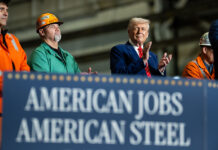The Fed officially announced a second round of money printing this week. The central bank plans to buy $600 billion worth of Treasury securities by June of next year. To pay for the bonds, the Fed will deliver electronically printed money to the member banks.
One of Bernanke’s goals with this second round of money printing, as described in his November 5 Washington Post op-ed, is to inflate stock prices. Looking past the fact that this is a highly irresponsible policy decision, the question is, will it be successful? Generally when the Fed wants to inflate asset prices, it has no problem doing so. Two recent examples are of course the tech-stock bubble and the real-estate bubble.
As far as the Fed’s current asset-price-inflation policy goes, one could argue that it is already having the intended effects. As word started to leak that Bernanke & Co. planned to print more money, stock, bond, and commodity prices all rose. The S&P 500 is up almost 15% since the end of August. But what if the Fed’s plan backfires? In its furor to lift stock prices, the Fed’s policy actions have also caused a massive increase in commodity prices. Since August 31, corn is up 34%, soy is up 25%, zinc is up 20%, copper is up 15%, aluminum is up 20%, and gas prices are up 16%.
With excess capacity in the system and corporate profitability near all-time highs, businesses may struggle to pass through rising input prices. When costs go up and revenues don’t, profits decline. Falling profits have never been positive for the stock market. With much of the benefit of the Fed’s money-printing policy already priced in, investors could be in for an unpleasant surprise. I’m not advocating that this is going to happen, but it is a risk worth considering.



